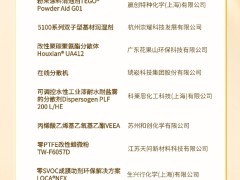据生物柴油网6月7日报道,国际航空运输协会(IATA)6月6日宣布,预计到2028年,可再生燃料的总产量将达到至少182亿加仑。可持续航空燃料(SAF)将依托新增的生物精炼厂和现有设施的扩建,在这一不断增长的产量中占一部分。更为重要的是,预计产量会覆盖北美、欧洲和亚太地区。
国际航空运输协会总干事Willie Walsh表示:“预期的产量增长非常令人鼓舞。”“基于这一点,我们需要各国政府采取行动,确保SAF获得公平的生产份额。这首先意味着,要采取生产激励措施来支持航空业的能源转型。这就需要政府继续批准更多种类的SAF生产方法和原料。随着这两项措施的成功实施,我们可以相信,预计2028年生产水平将与我们最近所发布的2050年实现净零碳排放路线图保持一致。这一点至关重要,因为我们期冀SAF在2050年能够占碳减排约62%的份额。”
支持这种乐观前景的趋势苗头已经显而易见。2022年,SAF产量增加了两倍,达到约7925万加仑,潜在SAF生产商的项目公告正在迅速增长。
国际航空运输协会统计了在30个国家85多家生产商已宣布的130多个相关可再生燃料项目。这些项目中的每一个都公布了在其扩大可再生燃料产品范围时包括SAF的意图或承诺。
通常情况下,项目宣布和商业化日期之间有3到5年的滞后期。
这意味着,在2030年之前可再生燃料产能仍可能继续增加。
国际航空运输协会表示,如果可再生燃料产量按估计到2028年达到182亿加仑,到2030年将达到264亿加仑。哪怕只有30%产品是SAF,到2030年,SAF产量将接近80亿加仑。
Walsh说:“从这些新的和扩大的设施中保障必要的SAF百分比供给是不稳定的。”“但随着世界各国政府在国际民航组织上就到2050年实现净零排放的长期目标达成一致,他们现在共同承担航空脱碳的责任。这意味着要建立一个政策框架,确保航空业在SAF可再生能源生产中获得必要的份额。”
根据国际航空运输协会的说法,在目前的可持续性标准范围内,要推进生产方式多样化的理由显而易见,因为以前SAF生产途径较为单一。目前,预计未来五年内,85%的SAF产量将仅来自九种认证途径中加氢处理的酯和脂肪酸(HEFA)这一方案,HEFA是一种依赖废脂肪、油和油脂(FOG)原料等工业界公认为第二代原料的生产技术。
国际航空运输协会确定了实现SAF多样化的三个主要途径:
1.扩大已经认证的SAF途径,如自废弃物合成(alcohol-to-jet)和费托合成(Fischer-Tropsch)。
2.加快正在研发的新SAF生产途径的研发。
3.扩大原料和原料转化技术。
令这些途径加速到商业化水平将需要政府的政策引导。首先,SAF生产迫切需要统一的稳定政策支持,以此减少包括生产商、原料供应商和承购商在内的新市场进入者的行政、后勤和地理阻碍。
更根本的挑战是,找到开发新技术和生产设施所需的资金。
国际航空运输协会表示,各国政府应该通过这些投资,着眼于更广泛的可持续发展前景。
SAF可由剩余的林业和农业残留物、城市固体废物、食物垃圾和湿垃圾(即第三代原料)生产。
从第三代原料中生产SAF可以为政府提供长期的投资回报。这些回报有可能为环境清理提供资金支持,支持发展中的经济体,并同时实现能源转型和能源安全。
国际航空运输协会最近的一项调查显示,公众对SAF的支持率很高。
大约85%的旅行者同意政府应该激励航空公司使用SAF。
Walsh说:“公众见证了政府在向绿色能源发电过渡过程中所扮演的角色。他们现在期望在向SAF转型中,政府也能做到这一点。七国集团领导人刚刚重申他们理解‘SAF对可持续航空至关重要’。现在他们必须采用有效的政策来兑现他们曾经的承诺。有许多久经考验的有效工具可以促进SAF的生产,包括税收抵免、补贴,甚至对新兴技术和解决方案的直接投资等。航空公司希望购买SAF,市场需求已经等待多时。任何有意义激励SAF生产的举措,都将是前进进程中的一大步。”
林圣泽 编译自 生物柴油网
原文如下:
IATA: SAF production set for growth but needs policy support to diversify sources
The International Air Transport Association announced June 6 its expectation for overall renewable fuel production to reach an estimated capacity of at least 18.2 billion gallons by 2028. Sustainable aviation fuel (SAF) will comprise a portion of this growing output through new biorefineries and the expansion of existing facilities. importantly, the expected production has a wide geographic footprint covering North America, Europe and Asia Pacific.
“The expected production increase is extremely encouraging,” said Willie Walsh, IATA’s director general. “Seeing this, we need governments to act to ensure that SAF gets its fair production share. That means, in the first instance, production incentives to support aviation’s energy transition. And we need continued approval for more diversification of methods and feedstocks available for SAF production. With these two measures successfully in place, we can be confident that the expected 2028 production levels will be realistically aligned with our recently published roadmaps to net-zero carbon emissions by 2050. That is important as we are counting on SAF to provide about 62 percent of the carbon mitigation needed in 2050.”
Trends supporting this optimistic outlook are already visible. In 2022, SAF production tripled to some 79.25 million gallons and project announcements for potential SAF producers are rapidly growing.
IATA counts over 130 relevant renewable fuel projects announced by more than 85 producers across 30 countries. Each of these projects has either announced the intent or commitment to produce SAF within their wider product slate of renewable fuels.
Typically, there is a three- to five-year lag between a project announcement and its commercialization date.
This implies that further renewable fuel capacity out until 2030 could still be announced over the following years.
IATA stated that if renewable fuel production reaches 18.2 billion gallons by 2028 as estimated, the trajectory to 26.4 billion gallons by 2030 would be on track. If just 30 percent of that produced SAF, the industry could achieve nearly 8 billion gallons of SAF production by 2030.
“Achieving the necessary SAF-percentage output from these new and expanding facilities is not a given,” Walsh said. “But with governments the world over agreeing at ICAO to a long-term aspirational goal (LTAG) of net zero by 2050, they now share accountability for aviation’s decarbonization. That means establishing a policy framework to ensure that aviation gets the needed share of renewable energy production in SAF.”
The case for diversification, within current sustainability criteria, is clear, according to IATA. At present, it is expected that 85 percent of future SAF volume over the next five years will be derived from just one of nine certified pathways, being hydrotreated esters and fatty acids (HEFA), which is dependent on limited availability of feedstock such as waste fat, oil and grease (FOG) feedstocks recognized by industry as second-generation feedstock.
IATA identifies three main avenues to achieve SAF diversification:
Scale already certified SAF pathways such as alcohol-to-jet (ATJ) and Fischer-Tropsch
Accelerated R&D for SAF production pathways that are currently in development
Scale up of feedstock and feedstock-conversion technology
Accelerating these avenues to commercialized levels will require policy leadership from governments. To start, there is an impending need for the harmonization of core SAF policies as a means of reducing administrative, logistical and geographic barriers to entry for new market entrants, including producers, feedstock providers and offtakers.
More fundamentally, the challenge is finding the capital needed to fund the development of new technology and production facilities.
Governments must look at the broader sustainability picture with these investments, according to IATA.
SAF can be produced from surplus forestry and agricultural residues, municipal solid waste, food waste and wet wastes (third-generation feedstocks).
Producing SAF from these can create long-term return on investment opportunities for governments, with the potential of financing the clean-up of the environment, supporting developing economies and delivering a future-proofed intersection of energy transition and energy security.
A recent IATA survey revealed significant public support for SAF.
Some 85 percent of travelers agreed that governments should provide incentives for airlines to use SAF.
“People have experienced governments’ role in the transition to green energy for electricity,” Walsh said. “They now expect it for SAF. The G7 leaders are among the latest to reiterate their understanding that SAF is critical for sustainable aviation. Now they must support their declarations with effective policies. To promote SAF production, there are many tried and tested tools including tax credits, grants or even direct investments in emerging technologies and solutions. The market is there. Airlines want to purchase SAF. Anything to meaningfully incentivize SAF production will be a step forward.”
免责声明:本网转载自其它媒体的文章及图片,目的在于弘扬石化精神,传递更多石化信息,宣传国家石化产业政策,展示国家石化产业形象,参与国际石化产业舆论竞争,提高国际石化产业话语权,并不代表本网赞同其观点和对其真实性负责,在此我们谨向原作者和原媒体致以崇高敬意。如果您认为本站文章及图片侵犯了您的版权,请与我们联系,我们将第一时间删除。







